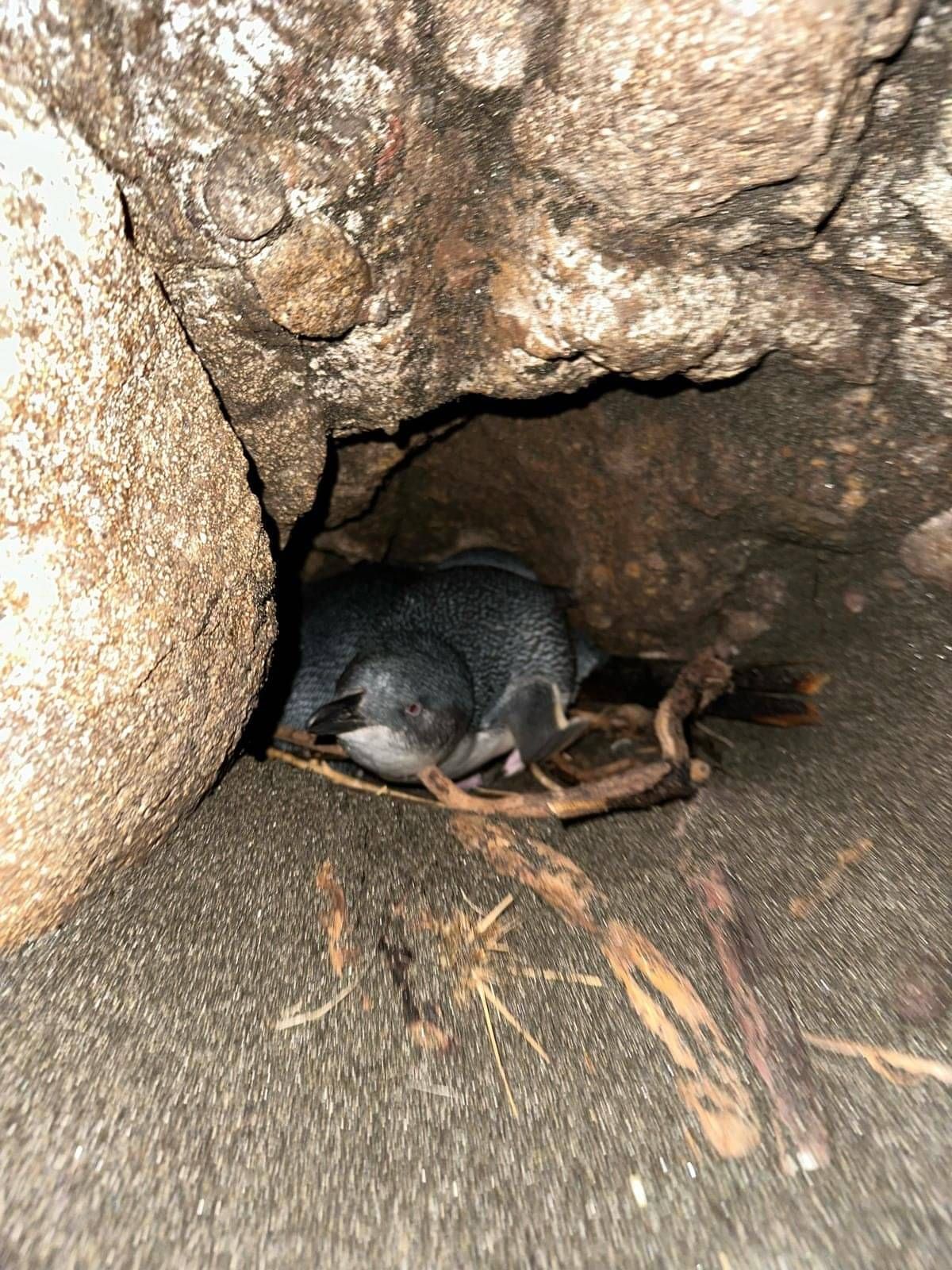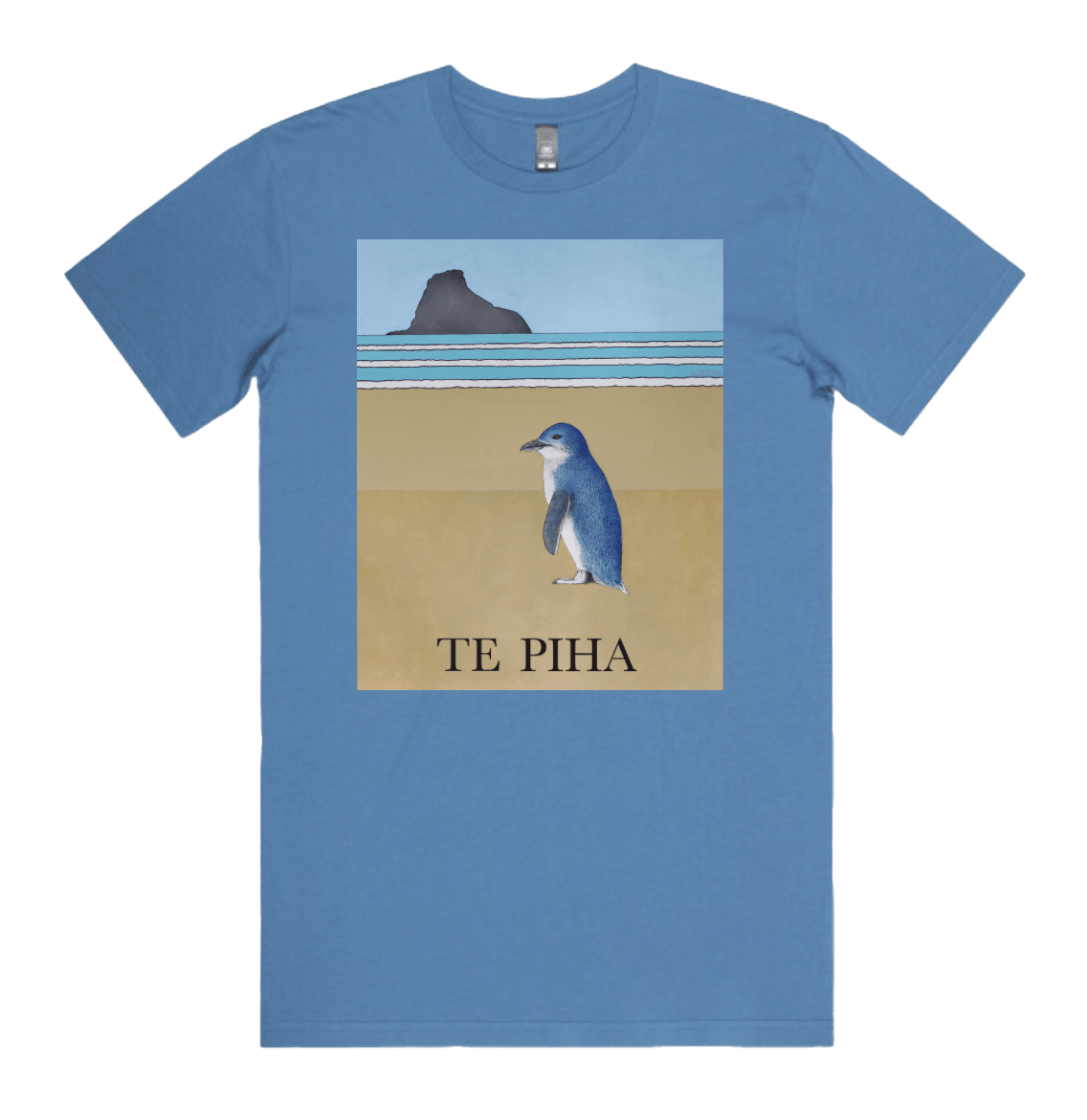Kororā / Little Penguin

Kororā:
NZ's pint-sized paddlers
While Aotearoa is home to three penguin species, kororā are the smallest and most common of the bunch. But life isn’t all smooth swimming for them - with their homes under threat, many have moved to quieter offshore islands. Keep your eyes peeled and you might just spot some in Piha.
Habitat: Sandy shores, forests and rocky outcrops on NZ’s coastal areas and nearby islands.
Nesting season: May to April.
Diet: Small fish, squid and crustaceans
What’s their superpower?
Kororā (aka little penguin) are speedy swimmers for their size. Their sleek bodies and powerful flippers help them reach speeds of 6km/h and depths more than 35m, which makes them effective hunters.
Why do we need them?
Native to Aotearoa, kororā are crucial to the balance of our marine ecosystem. As predators of small fish, squid and crustaceans, they help maintain the balance of these species in the ocean’s food chain.
Plus, they recycle nutrients through their waste which helps coastal plants and marine algae thrive. Without them, our ecosystem would be out of balance and in trouble.
Did you know?
Just like humans, kororā can recognise each other’s faces and voices, which is rare in the animal world. But it doesn’t stop there, some research suggests they may even recognise humans.
Fascinating facts
Tag-team parents: Kororā are pros at sharing the load. While mum goes fishing, dad cares for the chicks, then they swap.
Mini marvels: As the world’s smallest penguins, they weigh just 1kg and stand at just over 25cm tall – about the size of a loaf of Vogels.
Social swimmers: Kororā are super social, often teaming up to hunt, making it easier to catch their dinner.
Mates for life: If their last breeding went well, they’ll often reunite year after year, taking the same route to the same burrow. Although, this makes them more vulnerable if that area is compromised.
Dressed to impress: Kororā sport over 10,000 blue and white feathers. That’s 3-4 times more than most flighted birds.
Long-distance waddlers: They can roam up to 3 km inland and climb up to 500m to find the perfect nest.

Conservation corner
Sadly, kororā are at risk and in decline due to starvation, habitat destruction, pollution, climate change and introduced predators like dogs, cats, ferrets and stoats.
How you can help
Respect ‘No Dog’ zones and keep them out of the sand dunes and rocky coastal areas.
Keep cats indoors or enclosed in the yard as they love to catch kororā.
Set backyard traps to keep pesky predators in check.
Give kororā space if you see them – on land or in the ocean.
Clean up beaches as rubbish and pollution can be deadly for kororā.
Support conservation programmes that protect kororā and their natural habitats.
Help us to help the Kororā / Little Penguin
The little penguin / kororā is the smallest penguin in the world at just 25cm tall and weighing a little over 1kg. They are at risk and declining.
Your support will help volunteers to undertake trapping activity to keep predators at bay, to fence off penguin nesting areas, install nesting boxes and undertake monitoring activity of known populations in the Waitākere Ranges.
With over 75% of our indigenous species at risk of extinction*, the Pest Free Waitākere Ranges Alliance is raising funds to help defend the many special species of the Waitākere Ranges.
Thank you for your support of this fast and feisty little penguin!
Piha / Kororā / Little Penguin
Supporter Gear
Support the conservation efforts of Pest Free Waitākere Ranges Alliance!
By shopping with us, you're contributing to the protection and preservation of our ngahere, and supporting our vision of a restored and thriving Waitākere Ranges.
Choose from a range of clothing and accessories printed with our exclusive design by local artist Ted Scott featuring Piha's special species – the Kororā / Little Penguin.
Find out more
Image credits: Fern by Toby Hall on Unsplash • Kororā in nesting box at Piha by Peter Hosking • Kororā at Piha nesting site by Dudley Bell

